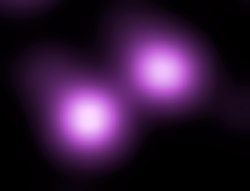Stars/Supernovas/Quiz
Stars/Supernovas is a lecture about supernovas from a stellar perspective. This quiz is based on the lecture.

You are free to take this quiz at any time.
To improve your score, read and study the lecture, the links contained within, listed under See also, External links, and in the {{stars resources}} template. This should give you adequate background to get 100 %.
As a "learning by doing" resource, this quiz helps you to assess your knowledge and understanding of the information, and it is a quiz you may take over and over as a learning resource to improve your knowledge, understanding, test-taking skills, and your score.
Suggestion: Have the lecture available in a separate window.
To master the information and use only your memory while taking the quiz, try rewriting the information from more familiar points of view, or be creative with association.
Enjoy learning by doing!
Quiz
edit
Hypotheses
edit- Distances are only as relative as the time it takes to travel them.
See also
editExternal links
edit- International Astronomical Union
- NASA/IPAC Extragalactic Database - NED
- NASA's National Space Science Data Center
- The SAO/NASA Astrophysics Data System
- SDSS Quick Look tool: SkyServer
- SIMBAD Astronomical Database
- SIMBAD Web interface, Harvard alternate
- Universal coordinate converter